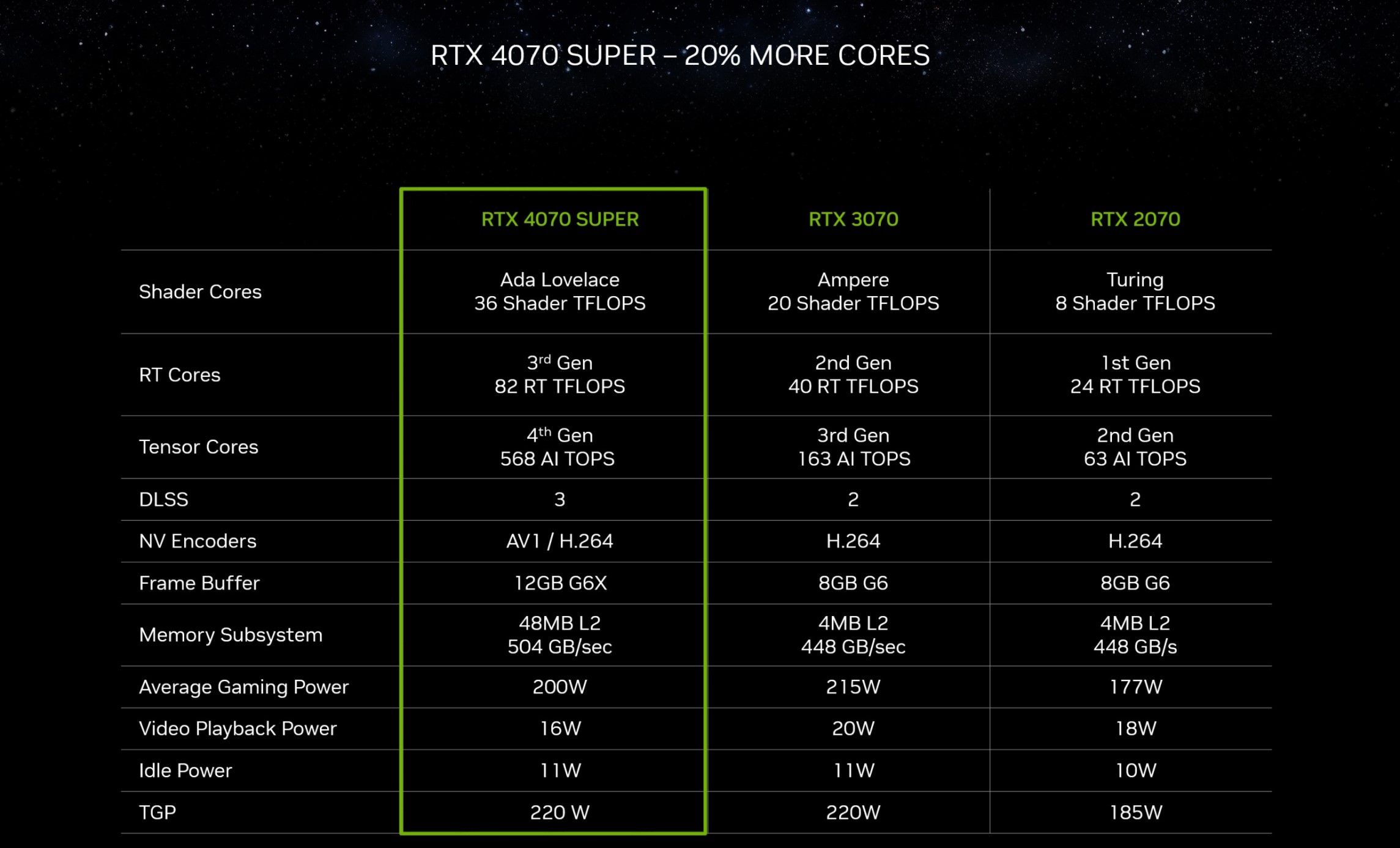Thepreliminary specificationsof Nvidia’s GeForce RTX 4070 Super, poised to be among thebest graphics cards, claim that the GPU could have 48MB of L2 cache. To our great surprise, thelaunch materialsthat Nvidia supplied us mentioned that the GeForce RTX 4070 Super was equipped with a GPU with 36MB of L2. This was a typo later corrected by Nvidia, reportsWccftech.
Nvidia’s GeForce RTX 4070 Super graphics card is based on the AD104 graphics processor with 7,168 CUDA cores enabled and a 192-bit memory interface. This is not the full AD104 GPU — used on theGeForce RTX 4070 Ti— with 7,680 CUDA cores and a 192-bit memory interface. However, the AD104 used for the GeForce RTX 4070 Super comes with a full 48MB L2 cache and, therefore, enjoys all the memory bandwidth benefits it can provide.

We can only wonder why Nvidia made a typo in its launch materials. Still, the company’s website description of itsGeForce RTX 4070 Supernotes that the product has 48 MB of L2 cache and a memory subsystem featuring 504 GB/s of peak bandwidth.
The compute performance of Nvidia’s GeForce RTX 4070 Super is already very close to that of the GeForce RTX 4070 Ti: 35.5 FP32 TFLOPS versus 40.09 FP32 TFLOPS. With the same memory subsystem, the new GeForce RTX 4070 Super board promises to offer performance that is very close to that of the GeForce RTX 4070 Ti. The difference between the two products can be shrunk even further with some overclocking.

Remember that Nvidia and TSMC refine process technologies to improve yield and reduce performance variability, sometimes leading to higher overclocking potential for GPUs. Therefore, the overclocking potential of the AD104 GPUs produced today is probably higher than that of AD104 graphics processors produced in late 2022 or early 2023.
Therefore, perhaps the most exciting part will be to learn how custom GeForce RTX 4070 Super graphics cards from Nvidia’s AIB models will behave. Some of those boards will have enhanced TGP (I.e., higher than 220W set by Nvidia), and they will likely also enjoy GPUs with higher overclocking potential.

Get Tom’s Hardware’s best news and in-depth reviews, straight to your inbox.
Anton Shilov is a contributing writer at Tom’s Hardware. Over the past couple of decades, he has covered everything from CPUs and GPUs to supercomputers and from modern process technologies and latest fab tools to high-tech industry trends.